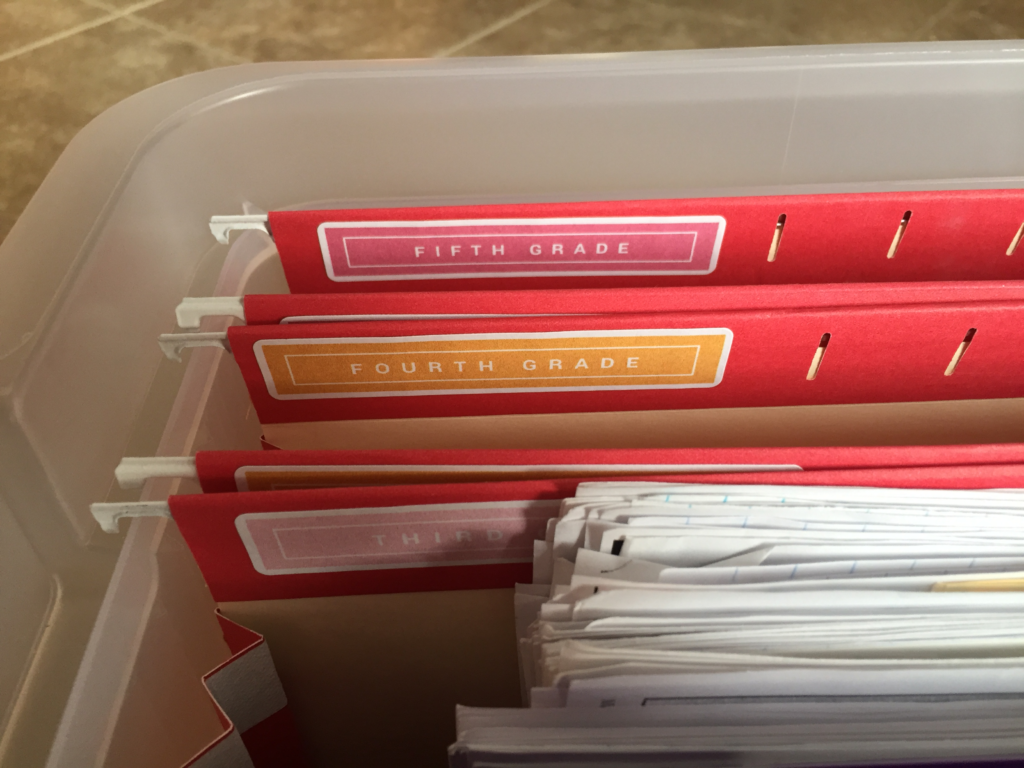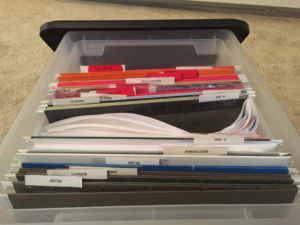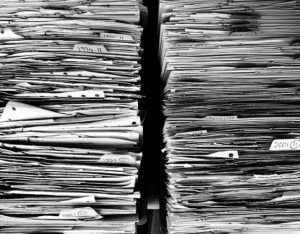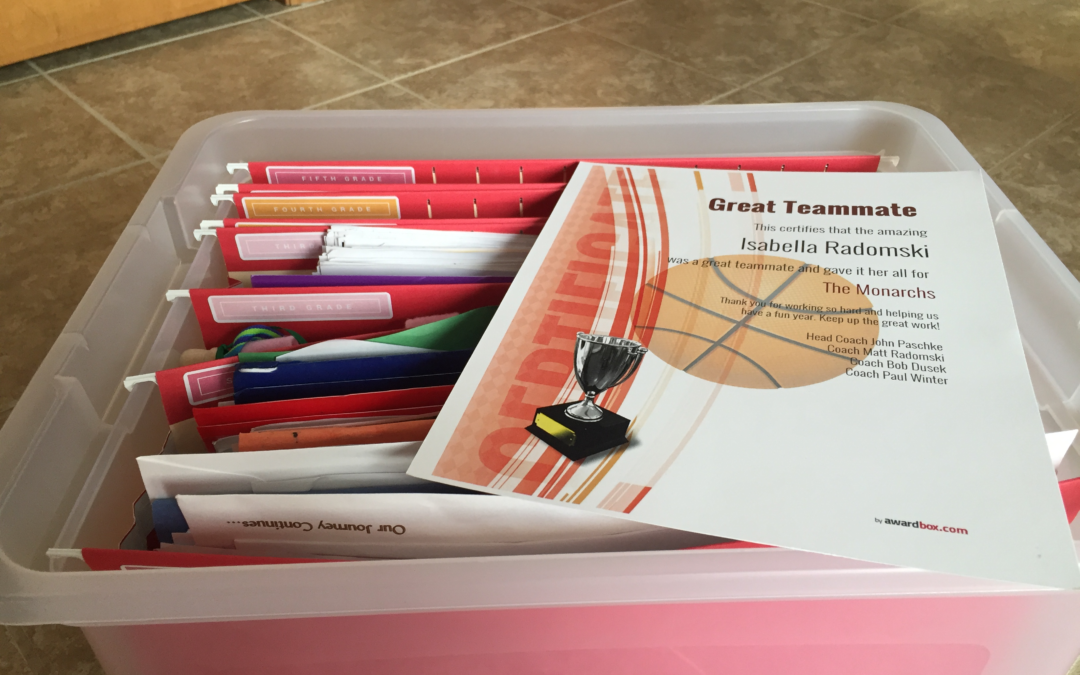
Ideas for Organizing Kid’s Papers
If you have children in school: preschool to high school or anywhere in between, you know there is a tremendous amount of paper that comes into your house. Some papers require action, some are sentimental keepsakes, and others can make their way to the recycle bin. Here are some ideas on keeping track of all these papers before you become overwhelmed (or fixing the problem if you are already overwhelmed).
Paper Workflow
A system to deal with papers when they enter your home is the beginning of an organized paper management system. Upon entry into your home, papers need a place to go otherwise they will end up on your countertops, dining room table, desk or floor.
Basic Inbox
An inbox of sorts works great. You can have a general family inbox or an inbox for each person. This is the most basic form of paper workflow. This inbox would be addressed frequently to avoid overflowing.
Workflow System
You can take paperwork management to the next level by creating a paper workflow system.
Immediate Action File
This system has an immediate action file for parents. Which is the location where papers requiring immediate action are placed. That way when your kid is shoving a field trip permission slip in your face, while you’re in the middle of making dinner or on a phone call, he will instead know where to put it for you to address it when you are ready.
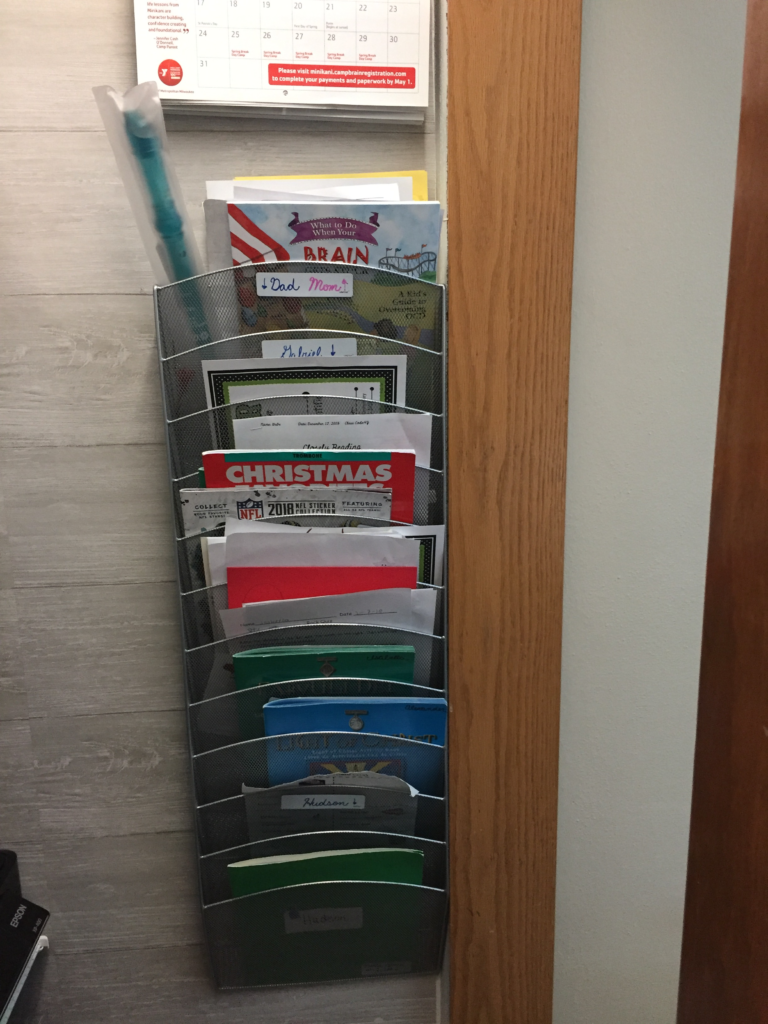
Holding Zone
The paper workflow system also has a holding zone for each person. So each person can initially manage their own papers. This can hold homework that is due later in the week: notes from friends, invitations, artwork and completed homework. To manage the paperwork, let it pile up in the holding zone all week. As part of the workflow, establish a time each week that you and your family can go through the papers. During this time, you can review their work (artwork, graded homework, homework to be done, etc.) and decide what papers go to storage, need further attention or can be recycled. Your child may identify what papers they are ready to recycle after you see them.
The paper workflow system also has a holding zone for each person. So each person can initially manage their own papers. This can hold homework that is due later in the week: notes from friends, invitations, artwork and completed homework. To manage the paperwork, let it pile up in the holding zone all week. As part of the workflow, establish a time each week that you and your family can go through the papers. During this time, you can review their work (artwork, graded homework, homework to be done, etc.) and decide what papers go to storage, need further attention or can be recycled. Your child may identify what papers they are ready to recycle after you see them.
The papers that are going to storage, should be filed or stored soon after you go through the papers to prevent overwhelm. Papers for recycle go right to the recycle bin.
To-Do File
Have a personal To-Do file for papers that need to be addressed or dealt with. Set aside time each week to work through the To-Do file.
Storage
File Container
Create a file bin for each child. Have one folder (or two) for holding a nice representation of the work they completed each school year. Some great items to keep are: nice samples of their homework, quality art projects, certificates of participation, awards, and a few photos to represent their age.
I like the clear plastic bins from Iris and legal size accordion file folders from Smead. The legal size folders allow for storage of artwork and projects that are a little larger than the standard 8 ½ x 11. Avery file folder labels allow you to add a fun personal touch to the file bins. You can handwrite the labels or use your computer to create graphically designed labels. Iheartorganzing has some great pintables to make your file folders look great. Be sure to label each bin with the person’s name and age or grade.
Digital Storage
Digital storage is a great storage option for both children and adults. Digital
storage is great for less physical papers when storage space is limited or not
desired. By scanning your children’s work, you have the option of creating a custom
photo or art book for their work. These books are great for kids that like to
look back at their work and memories. Older kids can help create the books to
add a personalized touch.
Organizing kid’s papers is an ongoing job, but remember to keep it simple and have fun. Staying on top of their papers will reduce your stress, allow you keep what is meaningful, and address or recycle the rest.
If you want help getting started on filing your children’s paperwork, an organizer can help. See if Top Shelf Home Organizing can help you on your journey. Contact Jayme to schedule a consult or chat about organizing.

